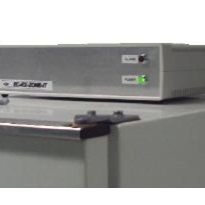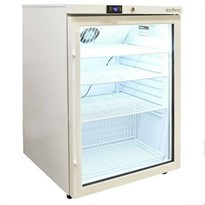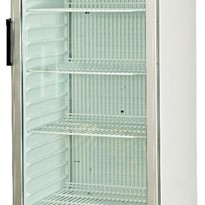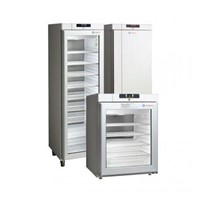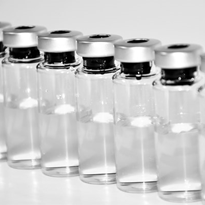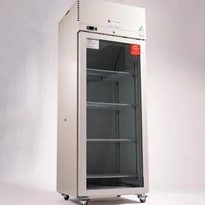Power Outages can create a major problem with vaccine storage. Vaccine storage temperatures are critical and can hinder the effectiveness of the vaccine if vaccines storage guidelines are not held to. The costs of a power failure can be high for a clinic, hospital or medical office that may be storing larger quantities of vaccines. Here are some tips and vaccine storage handling procedures that may help prevent disaster for your clinic:
A few actions this vaccine backup plan should include are:
- Do not open freezers and refrigerators until power is restored
- Most refrigerated vaccines are relatively stable at room temperature for limited periods of time. The vaccines of most concern are MMR and Varivax, which are sensitive to elevated temperatures.
Monitor temperatures; don’t discard; don’t administer affected vaccines until you have discussed with public health authorities.
If you can monitor the temperature of the storage unit from the outside without opening the door, take the following steps:
- Record room temperature (if possible) and the temperature inside the unit as soon as the power goes out.
- Record minimum and maximum temperatures reached inside the unit during the outage.
- If temperatures have fallen outside of the recommended range, follow your procedures for temperature excursions (out-of-range temperatures. Temperature excursion Any temperature reading that is outside the recommended range for vaccine storage as defined by the manufacturer’s package insert
- If you are unsure how long the power interruption will last, or you determine power will not be restored in time to maintain proper temperatures inside the unit, implement your emergency vaccine storage, handling, and transport procedures.
Emergencies usually happen without warning. Various situations—equipment failures, power outages, severe weather conditions, or natural disasters—may compromise vaccine storage conditions.
Vaccines should never be allowed to remain in a nonfunctioning unit for an extended period of time. Therefore, making preparations in advance to retrieve and/or protect vaccines as quickly as possible during a potentially compromising situation could save your facility costly vaccine loss. Emergency Backup Options Backup Equipment No piece of vaccine storage equipment is infallible.
At some point, equipment will fail because of a power outage, breakdown, or normal wear and tear. At a minimum, every facility should have:
- Backup TMDs (Temperature Monitoring Devices)
- Spare batteries
- Flashlights (in case of a power outage)
Vaccine transport containers and materials Your facility may also choose to have a backup storage unit so that vaccine may not have to be packed and/or moved to an alternative storage facility if the primary storage equipment fails
Generators and Backup Battery Power Sources An on-site generator can prevent having to transport vaccine to an alternative storage facility during a power outage. Keep sufficient fuel on hand to continuously run the generator for at least 72 hours.
A backup battery power source can also be used in lieu of a generator. If your facility has a backup battery power source, it should be tested quarterly and serviced annually (check the manufacturer’s guidance for testing procedures and maintenance schedules)
If the power outage is on-going:
- Keep all refrigerators and freezers closed. This will help to conserve the cold mass of the vaccines
- Continue to monitor temperatures if possible. Do not open units to check temperatures during the power outage. Instead, record the temperature as soon as possible after the power is restored, and the duration of the outage. This will provide data on the maximum temperature and maximum duration of exposures to elevated temperatures
- If alternative storage with reliable power sources is available (i.e., hospital with generator power), transfer to that facility can be considered. If transporting vaccine, measure the temperature of the refrigerator(s) and freezer(s) when the vaccines are removed. If possible transport the vaccine following proper cold chain procedures for storage and handling or try to the record the temperature the vaccine is exposed to during transport.
When power has been restored:
- Record the temperature in the unit as soon as possible after power has been restored. Continue to monitor the temperatures until they reach the normal 2–8 degrees Celsius range in the refrigerator, or -15 degrees C or less in the freezer. Be sure to record the duration of increased temperature exposure and the maximum temperature observed
- If you receive the vaccine from your state or local health department, they may be contacting you with guidance on collecting information on vaccine exposed to extreme temperatures
- If you are concerned about the exposure or efficacy of any of your vaccine stock, do not administer the vaccine until you have consulted your state or local health department
- Keep exposed vaccine separated from any new product you receive and continue to store at the proper temperature if possible
- Do not discard any potentially exposed vaccine. We will be working with the vaccine manufacturers to determine which vaccines may be viable.
What is a UPS? UPS is an acronym for Uninterruptible Power Supply.
A UPS is a power protection device that will regulate the incoming power to acceptable parameters and will also supply a limited amount of power when there is no mains power. It has a number of functions, designed to protect almost all electronic devices. To understand why this device is so important, it may help to understand the power a little better. If you have witnessed in the past flickering lights in your home or office, computer freezing up or restarting, then you may be suffering a power supply problem.
What many people do not realize is that the power provided to their home or office is at times irregular and not necessarily continuous 230 volts supply. The ideal voltage supply is 230v. However, even in residential areas, this can often be over 260v, or under 200v. It can get even worse in industrial areas if you live near or work in these zones due to machinery being used and the drop in power that is drawing from these zones.
A basic standby UPS can sense the voltage is not good enough, and will automatically go to battery power until normal power returns. If you’re in an area of frequent power outages or simply wish to invest in a UPS device for peace of mind, we can match the corresponding required UPS and battery back up to our Vacc-Safe Premium range of vaccine fridges
Please contact us for more information.



-160x160-state_article-rel-cat.png)




-160x160-state_article-rel-cat.png)

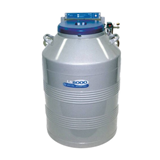








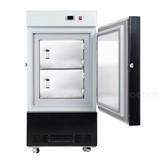
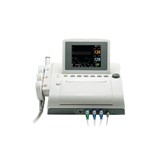


-205x205.jpg)


-205x205.jpg)





